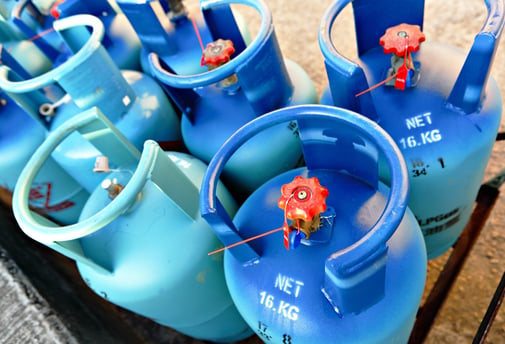Pressure calibration devices like controllers, calibrators and transducers are usually labeled for either pneumatic or hydraulic media. As the word "pneumatic" means "gas actuated," does it mean that it's possible to use these pneumatic calibrators with any gas media?
The answer to this lies in the specification of pneumatic calibrators, especially pressure controllers, where manufacturers often state permissible pressure media as nitrogen or clean, dry air. If all gases are considered “pneumatic,” then why is the list of permissible media so short? The aim of this blog post is to give some insight into the reasons why manufacturers restrict the use of certain gases and to cover the benefits of using nitrogen/clean, dry air as the pressure media.So what is clean, dry air? Air is composed of a multitude of gases, vapors, and aerosols that all vary in concentration, depending on time, location of nearby sources, etc. Compressed air that has been treated for reduction or elimination of aerosols is commonly referred to as clean, dry air. This process can vary greatly depending on applications but the ISO 8573-1:2010 standard class 5.5.4 is considered the benchmark for gauging the cleanliness of clean, dry air for instrumentation equipment.
It specifies purity classes of compressed air with respect to particles, water and oil, independent of the location in the compressed air system at which the air is specified or measured. Compressed air forms the source of pressure in most of these calibration instruments. The standard calls out clean, dry air to have less than 1 ppmw (parts per million weight) carbon dioxide, and less than 0.003 ppmw hydrocarbon vapors.

However, this still doesn't explain why gases like nitrogen or dry air are preferred for common applications as compared to other "purified" gases. These choices come down to three factors:
- Safety
- Cost
- Applications
Safety
A critical component to dealing with any pressure application is safety. The type of gas used is vital to maintain a safe environment. Gases like oxygen, hydrogen, methane or propane are highly combustible and pose a serious hazard to the operator as well as the surrounding environment. These gases are highly reactive and can cause damage to the materials in contact. Other gases, like carbon dioxide, can cause serious asphyxiation if a leak occurs and detrimental freezing hazards at low temperatures. Conversely, nitrogen and atmospheric air are only combustible in extreme conditions, and oxygen is the key component in any combustion reaction but doesn't carry any serious asphyxiation risks.
Cost
In order to avoid many of the safety hazards mentioned above, inert gases are very common in pressure applications. Inert gases, like nitrogen, are typically the preferred form of media not only for safety, but also for their low cost. Noble gases, even with their inert properties, are seldom used in pneumatic calibrators due to their high cost. These gases, like argon, neon and helium, require a special separation process from their naturally occurring state to their pure, compressed form. This makes the cost of compressed noble gases 12-15 times more expensive than compressed air or nitrogen.
Application
There are some applications that do require specialized noble gases like argon and helium. This can be due to their non-reactivity or even molecular weight.
Argon is used for welding applications on specialty alloys and titanium, where an inert media is required to prevent oxidizing of the welded materials. It is also used in the manufacturing of lasers for precision work. Argon is denser than atmospheric air so it is also used for packaging industry to prevent fluid oxidation.
Helium, on the other hand, is one of the most lightweight inert gases and is used in specialized leak testing applications that can't be caught because of the high molecular density of nitrogen or air. Helium is also used as an inert shielding gas for arc welding processes. One of the most common uses of this gas is found in the airbags in cars, which are filled with helium instead of air for quick deployment and expansion. One of the most common adverse effects of helium's lightweight properties is the higher likelihood of leaks within the pneumatic calibration equipment itself. These leaks often cause regulator or valve malfunction or control instability.
Conclusion
Safety, cost constraints and molecular densities of gases form the three pillars of deciding on the right gas for the pneumatic process in question. For most pneumatic pressure calibration applications, nitrogen and clean, dry air provide cost effective and stable pressure media. They both check most of the pressure safety guidelines and can easily be decontaminated and packaged for both on-site and factory use.
Related Reading:



